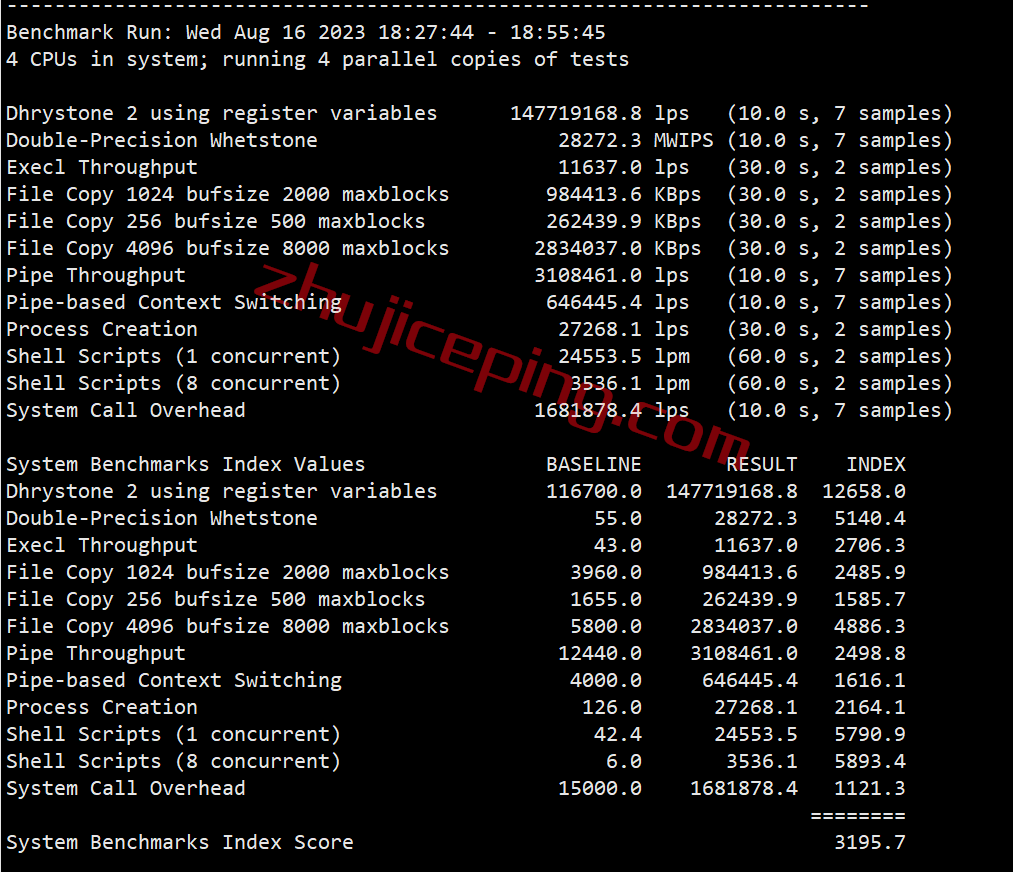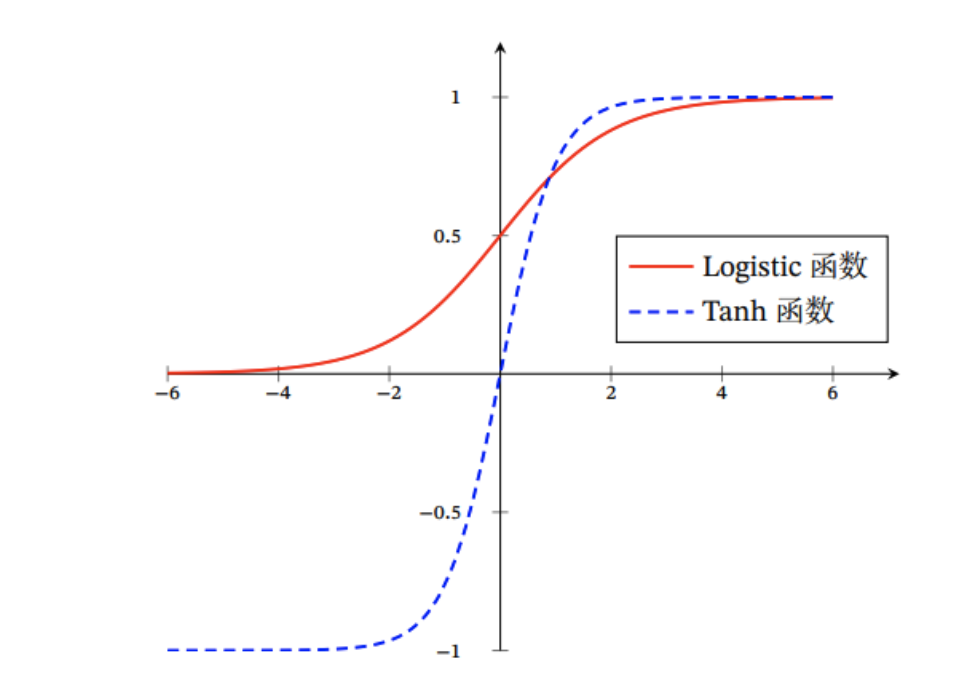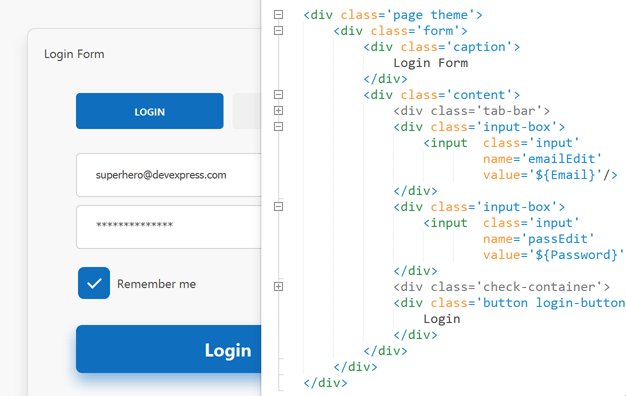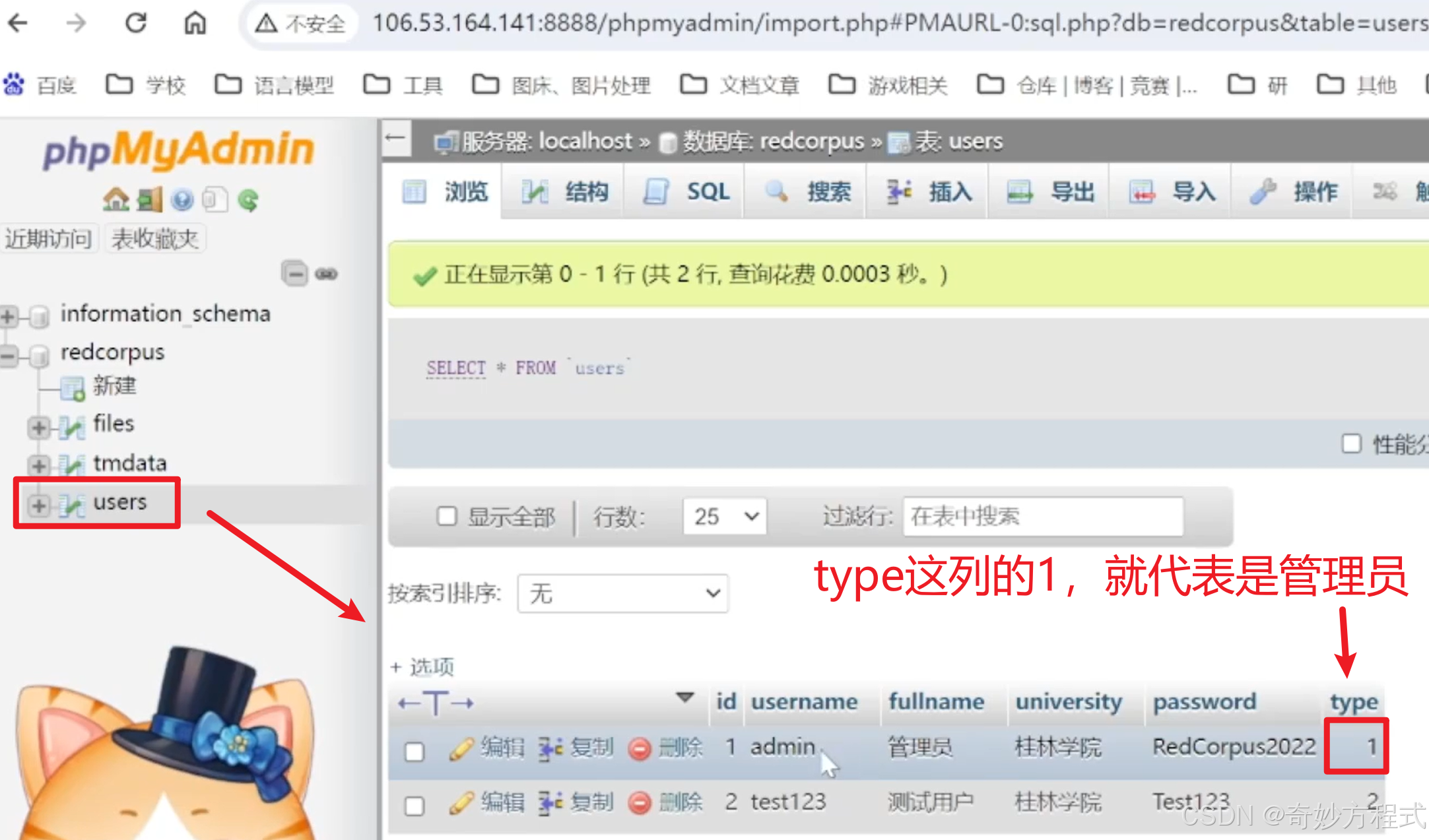Yolov8添加ConvNet模块
1 ConvNet系列相关内容
(1)2022 论文地址:A ConvNet for the 2020s
Code Link
如下图所示,精度、效率、尺寸都很不错。

论文的摘要如下:
视觉识别的“咆哮的 20 年代”始于视觉注意力 (ViT) 的引入,它迅速取代了 ConvNets 成为最先进的图像分类模型。另一方面,vanilla ViT 在应用于一般计算机视觉任务(如对象检测和语义分割)时面临困难。正是分层 Transformer(例如 Swin Transformers)重新引入了几个 ConvNet 先验,使 Transformer 实际上可以作为通用视觉骨干,并在各种视觉任务中表现出卓越的性能。然而,这种混合方法的有效性仍然在很大程度上归功于 Transformer 的固有优势,而不是卷积固有的归纳偏置。在这项工作中,我们重新审视了设计空间,并测试了纯ConvNet可以达到的极限。我们逐步将标准 ResNet “现代化”现代化,以设计视觉转换器,并发现导致性能差异的几个关键组件。这次探索的结果是一系列被称为 ConvNeXt 的纯 ConvNet 模型。ConvNeXts 完全由标准 ConvNet 模块构建,在精度和可扩展性方面与 Transformer 竞争,实现了 87.8% 的 ImageNet top-1 准确率,在 COCO 检测和 ADE20K 分割方面优于 Swin Transformers,同时保持了标准 ConvNet 的简单性和效率。
(2)2023论文地址:ConvNeXt V2: Co-designing and Scaling ConvNets with Masked Autoencoders
Code link
如下图所示,2023年改进的ConvNeXt比之前的更好了:

论文的摘要如下:
在改进的架构和更好的表示学习框架的推动下,视觉识别领域在 2020 年代初期实现了快速的现代化和性能提升。例如,以ConvNeXt [52]为代表的现代ConvNets在各种场景中都表现出了强大的性能。虽然这些模型最初是为使用ImageNet标签的监督学习而设计的,但它们也可能从自监督学习技术中受益,如蒙版自动编码器(MAE)[31]。然而,我们发现,简单地将这两种方法结合起来会导致性能不佳。在本文中,我们提出了一种全卷积掩码自编码器框架和一种新的全局响应归一化(GRN)层,可以将其添加到ConvNeXt架构中以增强通道间的特征竞争。这种自监督学习技术和架构改进的协同设计产生了一个名为 ConvNeXt V2 的新模型系列,该模型系列显着提高了纯 ConvNet 在各种识别基准上的性能,包括 ImageNet 分类、COCO 检测和 ADE20K 分割。我们还提供各种尺寸的预训练 ConvNeXt V2 模型,模型的范围有在 ImageNet 上准确率为 76.7% 的高效 3.7M 参数 Atto 模型,到仅使用公共训练数据即可达到 88.9% 准确率的 650M Huge 模型。
2 添加ConvNeXt的代码到ultralytics/nn/modules/conv.py文件末尾
网络模型代码参考地址:https://blog.csdn.net/Orange_sparkle/article/details/126827461?ops_request_misc=%257B%2522request%255Fid%2522%253A%2522172267585216800182132305%2522%252C%2522scm%2522%253A%252220140713.130102334…%2522%257D&request_id=172267585216800182132305&biz_id=0&utm_medium=distribute.pc_search_result.none-task-blog-2allsobaiduend~default-1-126827461-null-null.142v100pc_search_result_base5&utm_term=convnext%E6%A8%A1%E5%9E%8B%E4%BB%A3%E7%A0%81&spm=1018.2226.3001.4187
"""
original code from facebook research:
https://github.com/facebookresearch/ConvNeXt
"""
import torch
import torch.nn as nn
import torch.nn.functional as F
def drop_path(x, drop_prob: float = 0., training: bool = False):
"""Drop paths (Stochastic Depth) per sample (when applied in main path of residual blocks).
This is the same as the DropConnect impl I created for EfficientNet, etc networks, however,
the original name is misleading as 'Drop Connect' is a different form of dropout in a separate paper...
See discussion: https://github.com/tensorflow/tpu/issues/494#issuecomment-532968956 ... I've opted for
changing the layer and argument names to 'drop path' rather than mix DropConnect as a layer name and use
'survival rate' as the argument.
"""
if drop_prob == 0. or not training:
return x
keep_prob = 1 - drop_prob
shape = (x.shape[0],) + (1,) * (x.ndim - 1) # work with diff dim tensors, not just 2D ConvNets
random_tensor = keep_prob + torch.rand(shape, dtype=x.dtype, device=x.device)
random_tensor.floor_() # binarize
output = x.div(keep_prob) * random_tensor
return output
class DropPath(nn.Module):
"""Drop paths (Stochastic Depth) per sample (when applied in main path of residual blocks).
"""
def __init__(self, drop_prob=None):
super(DropPath, self).__init__()
self.drop_prob = drop_prob
def forward(self, x):
return drop_path(x, self.drop_prob, self.training)
class LayerNorm(nn.Module):
r""" LayerNorm that supports two data formats: channels_last (default) or channels_first.
The ordering of the dimensions in the inputs. channels_last corresponds to inputs with
shape (batch_size, height, width, channels) while channels_first corresponds to inputs
with shape (batch_size, channels, height, width).
"""
# channels_first (batch_size, channels, height, width) pytorch官方默认使用
# channels_last (batch_size, height, width, channels)
def __init__(self, normalized_shape, eps=1e-6, data_format="channels_last"):
super().__init__()
self.weight = nn.Parameter(torch.ones(normalized_shape), requires_grad=True) # weight bias对应γ β
self.bias = nn.Parameter(torch.zeros(normalized_shape), requires_grad=True)
self.eps = eps
self.data_format = data_format
if self.data_format not in ["channels_last", "channels_first"]:
raise ValueError(f"not support data format '{self.data_format}'")
self.normalized_shape = (normalized_shape,)
def forward(self, x: torch.Tensor) -> torch.Tensor:
if self.data_format == "channels_last":
return F.layer_norm(x, self.normalized_shape, self.weight, self.bias, self.eps)
elif self.data_format == "channels_first":
# [batch_size, channels, height, width]
# 对channels 维度求均值
mean = x.mean(1, keepdim=True)
# 方差
var = (x - mean).pow(2).mean(1, keepdim=True)
# 减均值,除以标准差的操作
x = (x - mean) / torch.sqrt(var + self.eps)
x = self.weight[:, None, None] * x + self.bias[:, None, None]
return x
# ConvNeXt Block
class ConvNeXt_Block(nn.Module):
r""" ConvNeXt Block. There are two equivalent implementations:
(1) DwConv -> LayerNorm (channels_first) -> 1x1 Conv -> GELU -> 1x1 Conv; all in (N, C, H, W)
(2) DwConv -> Permute to (N, H, W, C); LayerNorm (channels_last) -> Linear -> GELU -> Linear; Permute back
We use (2) as we find it slightly faster in PyTorch
Args:
dim (int): Number of input channels.
drop_rate (float): Stochastic depth rate. Default: 0.0
layer_scale_init_value (float): Init value for Layer Scale. Default: 1e-6.
"""
def __init__(self, dim, drop_rate=0., layer_scale_init_value=1e-6):
super().__init__()
self.dwconv = nn.Conv2d(dim, dim, kernel_size=7, padding=3, groups=dim) # depthwise conv
self.norm = LayerNorm(dim, eps=1e-6, data_format="channels_last")
self.pwconv1 = nn.Linear(dim, 4 * dim) # pointwise/1x1 convs, implemented with linear layers
self.act = nn.GELU()
self.pwconv2 = nn.Linear(4 * dim, dim)
# gamma 针对layer scale的操作
self.gamma = nn.Parameter(layer_scale_init_value * torch.ones((dim,)),
requires_grad=True) if layer_scale_init_value > 0 else None
self.drop_path = DropPath(drop_rate) if drop_rate > 0. else nn.Identity() # nn.Identity() 恒等映射
def forward(self, x: torch.Tensor) -> torch.Tensor:
shortcut = x
x = self.dwconv(x)
x = x.permute(0, 2, 3, 1) # [N, C, H, W] -> [N, H, W, C]
x = self.norm(x)
x = self.pwconv1(x)
x = self.act(x)
x = self.pwconv2(x)
if self.gamma is not None:
x = self.gamma * x
x = x.permute(0, 3, 1, 2) # [N, H, W, C] -> [N, C, H, W]
x = shortcut + self.drop_path(x)
return x
class ConvNeXt(nn.Module):
r""" ConvNeXt
A PyTorch impl of : `A ConvNet for the 2020s` -
https://arxiv.org/pdf/2201.03545.pdf
Args:
in_chans (int): Number of input image channels. Default: 3
num_classes (int): Number of classes for classification head. Default: 1000
depths (tuple(int)): Number of blocks at each stage. Default: [3, 3, 9, 3]
dims (int): Feature dimension at each stage. Default: [96, 192, 384, 768]
drop_path_rate (float): Stochastic depth rate. Default: 0.
layer_scale_init_value (float): Init value for Layer Scale. Default: 1e-6.
head_init_scale (float): Init scaling value for classifier weights and biases. Default: 1.
"""
def __init__(self, in_chans: int = 3, num_classes: int = 1000, depths: list = None,
dims: list = None, drop_path_rate: float = 0., layer_scale_init_value: float = 1e-6,
head_init_scale: float = 1.):
super().__init__()
# 最初下采样部分
self.downsample_layers = nn.ModuleList() # stem and 3 intermediate downsampling conv layers
# Conv2d k4, s4
# LayerNorm
stem = nn.Sequential(nn.Conv2d(in_chans, dims[0], kernel_size=4, stride=4),
LayerNorm(dims[0], eps=1e-6, data_format="channels_first"))
self.downsample_layers.append(stem)
# 对应stage2-stage4前的3个downsample
for i in range(3):
downsample_layer = nn.Sequential(LayerNorm(dims[i], eps=1e-6, data_format="channels_first"),
nn.Conv2d(dims[i], dims[i + 1], kernel_size=2, stride=2))
self.downsample_layers.append(downsample_layer)
self.stages = nn.ModuleList() # 4 feature resolution stages, each consisting of multiple blocks
# 等差数列,初始值0,到drop path rate,总共depths个数
dp_rates = [x.item() for x in torch.linspace(0, drop_path_rate, sum(depths))]
cur = 0
# 构建每个stage中堆叠的block
for i in range(4):
stage = nn.Sequential(
*[ConvNeXt_Block(dim=dims[i], drop_rate=dp_rates[cur + j], layer_scale_init_value=layer_scale_init_value)
for j in range(depths[i])]
)
self.stages.append(stage)
cur += depths[i]
self.norm = nn.LayerNorm(dims[-1], eps=1e-6) # final norm layer
self.head = nn.Linear(dims[-1], num_classes)
self.apply(self._init_weights)
self.head.weight.data.mul_(head_init_scale)
self.head.bias.data.mul_(head_init_scale)
def _init_weights(self, m):
if isinstance(m, (nn.Conv2d, nn.Linear)):
nn.init.trunc_normal_(m.weight, std=0.2)
nn.init.constant_(m.bias, 0)
def forward_features(self, x: torch.Tensor) -> torch.Tensor:
for i in range(4):
x = self.downsample_layers[i](x)
x = self.stages[i](x)
return self.norm(x.mean([-2, -1])) # global average pooling, (N, C, H, W) -> (N, C)
def forward(self, x: torch.Tensor) -> torch.Tensor:
x = self.forward_features(x)
x = self.head(x)
return x
def convnext_tiny(num_classes: int):
# https://dl.fbaipublicfiles.com/convnext/convnext_tiny_1k_224_ema.pth
model = ConvNeXt(depths=[3, 3, 9, 3],
dims=[96, 192, 384, 768],
num_classes=num_classes)
return model
def convnext_small(num_classes: int):
# https://dl.fbaipublicfiles.com/convnext/convnext_small_1k_224_ema.pth
model = ConvNeXt(depths=[3, 3, 27, 3],
dims=[96, 192, 384, 768],
num_classes=num_classes)
return model
def convnext_base(num_classes: int):
# https://dl.fbaipublicfiles.com/convnext/convnext_base_1k_224_ema.pth
# https://dl.fbaipublicfiles.com/convnext/convnext_base_22k_224.pth
model = ConvNeXt(depths=[3, 3, 27, 3],
dims=[128, 256, 512, 1024],
num_classes=num_classes)
return model
def convnext_large(num_classes: int):
# https://dl.fbaipublicfiles.com/convnext/convnext_large_1k_224_ema.pth
# https://dl.fbaipublicfiles.com/convnext/convnext_large_22k_224.pth
model = ConvNeXt(depths=[3, 3, 27, 3],
dims=[192, 384, 768, 1536],
num_classes=num_classes)
return model
def convnext_xlarge(num_classes: int):
# https://dl.fbaipublicfiles.com/convnext/convnext_xlarge_22k_224.pth
model = ConvNeXt(depths=[3, 3, 27, 3],
dims=[256, 512, 1024, 2048],
num_classes=num_classes)
return model
class CNeB(nn.Module):
# CSP ConvNextBlock with 3 convolutons by is cyy/yoloair
def __init__(self, c1, c2, n=1, shortcut=True, g=1, e=0.5): # ch_in, ch_out, number, shortcut, groups, expansion
super(CNeB, self).__init__()
c_ = int(c2 * e) # hidden channels
self.cv1 = Conv(c1, c_, 1, 1)
self.cv2 = Conv(c1, c_, 1, 1)
self.cv3 = Conv(2 * c_, c2, 1) # act=FReLU(c2)
self.m = nn.Sequential(*(ConvNeXt_Block(c_) for _ in range(n))) #ConvNeXt_Block与bilibili讲解的ConvNextblock的一致
def forward(self, x):
return self.cv3(torch.cat((self.m(self.cv1(x)), self.cv2(x)), dim=1))
在ultralytics/nn/modules/conv.py中的__all__中加入’CNeB’模块名称:

然后在ultralytics/nn/modules/init.py中添加模块名CNeB,并在下面的__all__中也添加CNeB,这样CNeB就封装成了ultralytics.nn.modules库函数:


3 在ultralytics/nn/tasks.py的parse_model函数中解析模型yaml文件,判断是否有CNeB模块,在pare_model函数中添加的代码如下:
elif m is CNeB:
c1, c2 = ch[f], args[0]
if c2 != nc: # if c2 not equal to number of classes (i.e. for Classify() output)
c2 = make_divisible(min(c2, max_channels) * width, 8)
args = [c1, c2, *args[1:]]
if m is CNeB:
args.insert(2, n)
n = 1


4 修改一个yolov8-seg.yaml文件
复制ultralytics/cfg/models/v8/yolov8-seg.yaml文件,在位置ultralytics/cfg/models/v8/中新建yolov8-CNeBseg.yaml文件,在backbone和head部分都添加CNeB模块。
# Ultralytics YOLO 🚀, AGPL-3.0 license
# YOLOv8-seg instance segmentation model. For Usage examples see https://docs.ultralytics.com/tasks/segment
# Parameters
nc: 80 # number of classes
scales: # model compound scaling constants, i.e. 'model=yolov8n-seg.yaml' will call yolov8-seg.yaml with scale 'n'
# [depth, width, max_channels]
n: [0.33, 0.25, 1024]
s: [0.33, 0.50, 1024]
m: [0.67, 0.75, 768]
l: [1.00, 1.00, 512]
x: [1.00, 1.25, 512]
# YOLOv8.0n backbone
backbone:
# [from, repeats, module, args]
- [-1, 1, Conv, [64, 3, 2]] # 0-P1/2
- [-1, 1, Conv, [128, 3, 2]] # 1-P2/4
- [-1, 3, C2f, [128, True]] #2
- [-1, 3, CNeB, [128] #-->3
- [-1, 1, Conv, [256, 3, 2]] # 3-P3/8-->4
- [-1, 6, C2f, [256, True]] #4-->5
- [-1, 6, CNeB, [256] #-->6
- [-1, 1, Conv, [512, 3, 2]] # 5-P4/16-->7
- [-1, 6, C2f, [512, True]] #6-->8
- [-1, 6, CNeB, [512] #-->9
- [-1, 1, Conv, [1024, 3, 2]] # 7-P5/32-->10
- [-1, 3, C2f, [1024, True]] #8-->11
- [-1, 3, CNeB, [1024] #-->12
- [-1, 1, SPPF, [1024, 5]] # 9-->13
# YOLOv8.0n head
head:
- [-1, 1, nn.Upsample, [None, 2, "nearest"]] #10-->14
- [[-1, 9], 1, Concat, [1]] # cat backbone P4-->15
- [-1, 3, C2f, [512]] # 12-->16
- [-1, 3, CNeB, [512] #-->17
- [-1, 1, nn.Upsample, [None, 2, "nearest"]] #13-->18
- [[-1, 6], 1, Concat, [1]] # cat backbone P3-->19
- [-1, 3, C2f, [256]] # 15 (P3/8-small)-->20
- [-1, 3, CNeB, [256] #-->21
- [-1, 1, Conv, [256, 3, 2]] #16-->22
- [[-1, 17], 1, Concat, [1]] # cat head P4-->23
- [-1, 3, C2f, [512]] # 18 (P4/16-medium)-->24
- [-1, 3, CNeB, [512] #-->25
- [-1, 1, Conv, [512, 3, 2]] #19-->26
- [[-1, 13], 1, Concat, [1]] # cat head P5-->27
- [-1, 3, C2f, [1024]] # 21 (P5/32-large)-->28
- [-1, 3, CNeB, [1024] #-->29
# - [[15, 18, 21], 1, Segment, [nc, 32, 256]] # Segment(P3, P4, P5)
- [[21, 25, 29], 1, Segment, [nc, 32, 256]] # Segment(P3, P4, P5)
注意在需要引用前面的序号部分要重新更新,“–>”符号指向新的序号
,backbone部分没有引用前面的序号,head部分有,就要相应的修改。
5 测试和训练
复制一份tests/test_python.py文件中的测试代码,新建文件命名为test_yolov8_CNeB_model.py,只保留下方代码:
# Ultralytics YOLO 🚀, AGPL-3.0 license
import contextlib
import urllib
from copy import copy
from pathlib import Path
import cv2
import numpy as np
import pytest
import torch
import yaml
from PIL import Image
from tests import CFG, IS_TMP_WRITEABLE, MODEL, SOURCE, TMP
from ultralytics import RTDETR, YOLO
from ultralytics.cfg import MODELS, TASK2DATA, TASKS
from ultralytics.data.build import load_inference_source
from ultralytics.utils import (
ASSETS,
DEFAULT_CFG,
DEFAULT_CFG_PATH,
LOGGER,
ONLINE,
ROOT,
WEIGHTS_DIR,
WINDOWS,
checks,
)
from ultralytics.utils.downloads import download
from ultralytics.utils.torch_utils import TORCH_1_9
CFG = 'ultralytics/cfg/models/v8/yolov8l-CNeBseg.yaml' #使用l模型加一个l字母
SOURCE = ASSETS / "bus.jpg"
def test_model_forward():
"""Test the forward pass of the YOLO model."""
model = YOLO(CFG)
model(source=SOURCE, imgsz=[512,512], augment=True) # also test no source and augment
先在ultralytics/nn/tasks.py的parse_model函数中增加一行代码用于查看模型结构:
print(f"{i:>3}{str(f):>20}{n_:>3}{m.np:10.0f} {t:<45}{str(args):<30}")

运行test_yolov8_CNeB_model.py的结果如下:
============================= test session starts ==============================
collected 1 item
test_yolov8_CBAM_model.py::test_model_forward PASSED [100%] 0 -1 1 1856 ultralytics.nn.modules.conv.Conv [3, 64, 3, 2]
1 -1 1 73984 ultralytics.nn.modules.conv.Conv [64, 128, 3, 2]
2 -1 3 279808 ultralytics.nn.modules.block.C2f [128, 128, 3, True]
3 -1 3 142720 ultralytics.nn.modules.conv.CNeB [128, 128, 3]
4 -1 1 295424 ultralytics.nn.modules.conv.Conv [128, 256, 3, 2]
5 -1 6 2101248 ultralytics.nn.modules.block.C2f [256, 256, 6, True]
6 -1 6 963072 ultralytics.nn.modules.conv.CNeB [256, 256, 6]
7 -1 1 1180672 ultralytics.nn.modules.conv.Conv [256, 512, 3, 2]
8 -1 6 8396800 ultralytics.nn.modules.block.C2f [512, 512, 6, True]
9 -1 6 3761152 ultralytics.nn.modules.conv.CNeB [512, 512, 6]
10 -1 1 2360320 ultralytics.nn.modules.conv.Conv [512, 512, 3, 2]
11 -1 3 4461568 ultralytics.nn.modules.block.C2f [512, 512, 3, True]
12 -1 3 2143744 ultralytics.nn.modules.conv.CNeB [512, 512, 3]
13 -1 1 656896 ultralytics.nn.modules.block.SPPF [512, 512, 5]
14 -1 1 0 torch.nn.modules.upsampling.Upsample [None, 2, 'nearest']
15 [-1, 9] 1 0 ultralytics.nn.modules.conv.Concat [1]
16 -1 3 4723712 ultralytics.nn.modules.block.C2f [1024, 512, 3]
17 -1 3 2143744 ultralytics.nn.modules.conv.CNeB [512, 512, 3]
18 -1 1 0 torch.nn.modules.upsampling.Upsample [None, 2, 'nearest']
19 [-1, 6] 1 0 ultralytics.nn.modules.conv.Concat [1]
20 -1 3 1247744 ultralytics.nn.modules.block.C2f [768, 256, 3]
21 -1 3 547584 ultralytics.nn.modules.conv.CNeB [256, 256, 3]
22 -1 1 590336 ultralytics.nn.modules.conv.Conv [256, 256, 3, 2]
23 [-1, 17] 1 0 ultralytics.nn.modules.conv.Concat [1]
24 -1 3 4592640 ultralytics.nn.modules.block.C2f [768, 512, 3]
25 -1 3 2143744 ultralytics.nn.modules.conv.CNeB [512, 512, 3]
26 -1 1 2360320 ultralytics.nn.modules.conv.Conv [512, 512, 3, 2]
27 [-1, 13] 1 0 ultralytics.nn.modules.conv.Concat [1]
28 -1 3 4723712 ultralytics.nn.modules.block.C2f [1024, 512, 3]
29 -1 3 2143744 ultralytics.nn.modules.conv.CNeB [512, 512, 3]
30 [21, 25, 29] 1 7950688 ultralytics.nn.modules.head.Segment [80, 32, 256, [256, 512, 512]]
image 1/1 /XXXXXXXX/ultralyticsv8_2-main/ultralytics/assets/bus.jpg: 640x480 (no detections), 135.6ms
Speed: 2.1ms preprocess, 135.6ms inference, 0.5ms postprocess per image at shape (1, 3, 640, 480)
模型修改完成,选择自己的分割数据进行训练,结果如下:

如上图,这里使用“l”大模型,只需yolov8-CBAMseg.yaml中加一个“l”变成yolov8l-CNeBseg.yaml,优化器为上一篇博客yolov8更改的Lion优化器。可以看到arguments参数按照“l”模型发生了调整,模型开始训练。

6 添加ConvNeXtV2模块
如果添加ConvNeXtV2模块ultralytics/nn/modules/conv.py文件末尾,后面还有新模块的话,conv.py会越来越长,一种整洁的方法时,在conv.py 的同级目录中新建一个自定义模块的py文件,然后在conv.py中引用并按照前面的添加过程也是可以的。
如下图:

convnextv2.py的代码如下:
# coding=gbk
# 来源:https://blog.csdn.net/qq_42076902/article/details/129938723?ops_request_misc=%257B%2522request%255Fid%2522%253A%2522172268630316800207028360%2522%252C%2522scm%2522%253A%252220140713.130102334.pc%255Fall.%2522%257D&request_id=172268630316800207028360&biz_id=0&utm_medium=distribute.pc_search_result.none-task-blog-2~all~first_rank_ecpm_v1~rank_v31_ecpm-4-129938723-null-null.142^v100^pc_search_result_base5&utm_term=convnext-V2%E7%BD%91%E7%BB%9C%E4%BB%A3%E7%A0%81&spm=1018.2226.3001.4187
# cited from: https://github.com/facebookresearch/ConvNeXt-V2/blob/main/models/convnextv2.py
import torch
import torch.nn as nn
import torch.nn.functional as F
from timm.models.layers import trunc_normal_, DropPath
class ConvNeXtV2_Block(nn.Module):
""" ConvNeXtV2 Block.
Args:
dim (int): Number of input channels.
drop_path (float): Stochastic depth rate. Default: 0.0
"""
def __init__(self, dim, drop_path=0.):
super().__init__()
self.dwconv = nn.Conv2d(dim, dim, kernel_size=7, padding=3, groups=dim) # depthwise conv
self.norm = LayerNorm(dim, eps=1e-6)
self.pwconv1 = nn.Linear(dim, 4 * dim) # pointwise/1x1 convs, implemented with linear layers
self.act = nn.GELU()
self.grn = GRN(4 * dim)
self.pwconv2 = nn.Linear(4 * dim, dim)
self.drop_path = DropPath(drop_path) if drop_path > 0. else nn.Identity()
def forward(self, x):
input = x
x = self.dwconv(x)
x = x.permute(0, 2, 3, 1) # (N, C, H, W) -> (N, H, W, C)
x = self.norm(x)
x = self.pwconv1(x)
x = self.act(x)
x = self.grn(x)
x = self.pwconv2(x)
x = x.permute(0, 3, 1, 2) # (N, H, W, C) -> (N, C, H, W)
x = input + self.drop_path(x)
return x
class LayerNorm(nn.Module):
""" LayerNorm that supports two data formats: channels_last (default) or channels_first.
The ordering of the dimensions in the inputs. channels_last corresponds to inputs with
shape (batch_size, height, width, channels) while channels_first corresponds to inputs
with shape (batch_size, channels, height, width).
"""
def __init__(self, normalized_shape, eps=1e-6, data_format="channels_last"):
super().__init__()
self.weight = nn.Parameter(torch.ones(normalized_shape))
self.bias = nn.Parameter(torch.zeros(normalized_shape))
self.eps = eps
self.data_format = data_format
if self.data_format not in ["channels_last", "channels_first"]:
raise NotImplementedError
self.normalized_shape = (normalized_shape,)
def forward(self, x):
if self.data_format == "channels_last":
return F.layer_norm(x, self.normalized_shape, self.weight, self.bias, self.eps)
elif self.data_format == "channels_first":
u = x.mean(1, keepdim=True)
s = (x - u).pow(2).mean(1, keepdim=True)
x = (x - u) / torch.sqrt(s + self.eps)
x = self.weight[:, None, None] * x + self.bias[:, None, None]
return x
class GRN(nn.Module):
""" GRN (Global Response Normalization) layer
"""
def __init__(self, dim):
super().__init__()
self.gamma = nn.Parameter(torch.zeros(1, 1, 1, dim))
self.beta = nn.Parameter(torch.zeros(1, 1, 1, dim))
def forward(self, x):
Gx = torch.norm(x, p=2, dim=(1, 2), keepdim=True)
Nx = Gx / (Gx.mean(dim=-1, keepdim=True) + 1e-6)
return self.gamma * (x * Nx) + self.beta + x
class ConvNeXtV2(nn.Module):
""" ConvNeXt V2
Args:
in_chans (int): Number of input image channels. Default: 3
num_classes (int): Number of classes for classification head. Default: 1000
depths (tuple(int)): Number of blocks at each stage. Default: [3, 3, 9, 3]
dims (int): Feature dimension at each stage. Default: [96, 192, 384, 768]
drop_path_rate (float): Stochastic depth rate. Default: 0.
head_init_scale (float): Init scaling value for classifier weights and biases. Default: 1.
"""
def __init__(self, in_chans=3, num_classes=1000,
depths=[3, 3, 9, 3], dims=[96, 192, 384, 768],
drop_path_rate=0., head_init_scale=1.
):
super().__init__()
self.depths = depths
self.downsample_layers = nn.ModuleList() # stem and 3 intermediate downsampling conv layers
stem = nn.Sequential(
nn.Conv2d(in_chans, dims[0], kernel_size=4, stride=4),
LayerNorm(dims[0], eps=1e-6, data_format="channels_first")
)
self.downsample_layers.append(stem)
for i in range(3):
downsample_layer = nn.Sequential(
LayerNorm(dims[i], eps=1e-6, data_format="channels_first"),
nn.Conv2d(dims[i], dims[i + 1], kernel_size=2, stride=2),
)
self.downsample_layers.append(downsample_layer)
self.stages = nn.ModuleList() # 4 feature resolution stages, each consisting of multiple residual blocks
dp_rates = [x.item() for x in torch.linspace(0, drop_path_rate, sum(depths))]
cur = 0
for i in range(4):
stage = nn.Sequential(
*[ConvNeXtV2_Block(dim=dims[i], drop_path=dp_rates[cur + j]) for j in range(depths[i])]
)
self.stages.append(stage)
cur += depths[i]
self.norm = nn.LayerNorm(dims[-1], eps=1e-6) # final norm layer
self.head = nn.Linear(dims[-1], num_classes)
self.apply(self._init_weights)
self.head.weight.data.mul_(head_init_scale)
self.head.bias.data.mul_(head_init_scale)
def _init_weights(self, m):
if isinstance(m, (nn.Conv2d, nn.Linear)):
trunc_normal_(m.weight, std=.02)
nn.init.constant_(m.bias, 0)
def forward_features(self, x):
for i in range(4):
x = self.downsample_layers[i](x)
x = self.stages[i](x)
return self.norm(x.mean([-2, -1])) # global average pooling, (N, C, H, W) -> (N, C)
def forward(self, x):
x = self.forward_features(x)
print(x.size())
x = self.head(x)
return x
def convnextv2_atto(num_classes=100, **kwargs):
model = ConvNeXtV2(depths=[2, 2, 6, 2], dims=[40, 80, 160, 320], num_classes=num_classes, **kwargs)
return model
def convnextv2_femto(num_classes=100, **kwargs):
model = ConvNeXtV2(depths=[2, 2, 6, 2], dims=[48, 96, 192, 384], num_classes=num_classes, **kwargs)
return model
def convnext_pico(num_classes=100, **kwargs):
model = ConvNeXtV2(depths=[2, 2, 6, 2], dims=[64, 128, 256, 512], num_classes=num_classes, **kwargs)
return model
def convnextv2_nano(num_classes=100, **kwargs):
model = ConvNeXtV2(depths=[2, 2, 8, 2], dims=[80, 160, 320, 640], num_classes=num_classes, **kwargs)
return model
def convnextv2_tiny(num_classes=100, **kwargs):
model = ConvNeXtV2(depths=[3, 3, 9, 3], dims=[96, 192, 384, 768], num_classes=num_classes, **kwargs)
return model
def convnextv2_base(num_classes=100, **kwargs):
model = ConvNeXtV2(depths=[3, 3, 27, 3], dims=[128, 256, 512, 1024], num_classes=num_classes, **kwargs)
return model
def convnextv2_large(num_classes=100, **kwargs):
model = ConvNeXtV2(depths=[3, 3, 27, 3], dims=[192, 384, 768, 1536], num_classes=num_classes, **kwargs)
return model
def convnextv2_huge(num_classes=100, **kwargs):
model = ConvNeXtV2(depths=[3, 3, 27, 3], dims=[352, 704, 1408, 2816], num_classes=num_classes, **kwargs)
return model
class CNeB(nn.Module):
# CSP ConvNextBlock with 3 convolutons by is cyy/yoloair
def __init__(self, c1, c2, n=1, shortcut=True, g=1, e=0.5): # ch_in, ch_out, number, shortcut, groups, expansion
super(CNeB, self).__init__()
c_ = int(c2 * e) # hidden channels
self.cv1 = Conv(c1, c_, 1, 1)
self.cv2 = Conv(c1, c_, 1, 1)
self.cv3 = Conv(2 * c_, c2, 1) # act=FReLU(c2)
self.m = nn.Sequential(*(ConvNeXtV2_Block(c_) for _ in range(n))) #ConvNeXtV2_Block
def forward(self, x):
return self.cv3(torch.cat((self.m(self.cv1(x)), self.cv2(x)), dim=1))
if __name__ == "__main__":
m = convnextv2_atto(num_classes=3)
params = sum(p.numel() for p in m.parameters())
print(params)
input = torch.randn(1, 3, 256, 256)
out = m(input)
print(out.shape)
然后在conv.py 中引用ConvNeXtV2_Block模块

from .covnextv2 import ConvNeXtV2_Block
class CNeBV2(nn.Module):
# CSP ConvNextBlock with 3 convolutons by is cyy/yoloair
def __init__(self, c1, c2, n=1, shortcut=True, g=1, e=0.5): # ch_in, ch_out, number, shortcut, groups, expansion
super(CNeBV2, self).__init__()
c_ = int(c2 * e) # hidden channels
self.cv1 = Conv(c1, c_, 1, 1)
self.cv2 = Conv(c1, c_, 1, 1)
self.cv3 = Conv(2 * c_, c2, 1) # act=FReLU(c2)
self.m = nn.Sequential(*(ConvNeXtV2_Block(c_) for _ in range(n))) #ConvNeXtV2_Block
def forward(self, x):
return self.cv3(torch.cat((self.m(self.cv1(x)), self.cv2(x)), dim=1))
covnext的ConvNeXt_Block也可以改成上面的这种方式。
然后在conv.py前面申明模块名

在ultralytics/nn/modules/init.py中申明模块名

在ultralytics/nn/tasks.py中parse_model函数内解析yaml模型文件,添加如下语句:

上面将两个ConvNeXt版本合在一起处理,并开启了print,解析时会打印模块信息。
7 修改一个yaml文件
这里用之前修改的yolov8-CNeBseg.yaml文件复制一份,命名为yolov8-CNeBV2seg.yaml,然后将CNeB模块名改成CNeBV2即可:
# Ultralytics YOLO 🚀, AGPL-3.0 license
# YOLOv8-seg instance segmentation model. For Usage examples see https://docs.ultralytics.com/tasks/segment
# Parameters
nc: 80 # number of classes
scales: # model compound scaling constants, i.e. 'model=yolov8n-seg.yaml' will call yolov8-seg.yaml with scale 'n'
# [depth, width, max_channels]
n: [0.33, 0.25, 1024]
s: [0.33, 0.50, 1024]
m: [0.67, 0.75, 768]
l: [1.00, 1.00, 512]
x: [1.00, 1.25, 512]
# YOLOv8.0n backbone
backbone:
# [from, repeats, module, args]
- [-1, 1, Conv, [64, 3, 2]] # 0-P1/2
- [-1, 1, Conv, [128, 3, 2]] # 1-P2/4
- [-1, 3, C2f, [128, True]] #2
- [-1, 3, CNeBV2, [128]] #-->3
- [-1, 1, Conv, [256, 3, 2]] # 3-P3/8-->4
- [-1, 6, C2f, [256, True]] #4-->5
- [-1, 6, CNeBV2, [256]] #-->6
- [-1, 1, Conv, [512, 3, 2]] # 5-P4/16-->7
- [-1, 6, C2f, [512, True]] #6-->8
- [-1, 6, CNeBV2, [512]] #-->9
- [-1, 1, Conv, [1024, 3, 2]] # 7-P5/32-->10
- [-1, 3, C2f, [1024, True]] #8-->11
- [-1, 3, CNeBV2, [1024]] #-->12
- [-1, 1, SPPF, [1024, 5]] # 9-->13
# YOLOv8.0n head
head:
- [-1, 1, nn.Upsample, [None, 2, "nearest"]] #10-->14
- [[-1, 9], 1, Concat, [1]] # cat backbone P4-->15
- [-1, 3, C2f, [512]] # 12-->16
- [-1, 3, CNeBV2, [512]] #-->17
- [-1, 1, nn.Upsample, [None, 2, "nearest"]] #13-->18
- [[-1, 6], 1, Concat, [1]] # cat backbone P3-->19
- [-1, 3, C2f, [256]] # 15 (P3/8-small)-->20
- [-1, 3, CNeBV2, [256]] #-->21
- [-1, 1, Conv, [256, 3, 2]] #16-->22
- [[-1, 17], 1, Concat, [1]] # cat head P4-->23
- [-1, 3, C2f, [512]] # 18 (P4/16-medium)-->24
- [-1, 3, CNeBV2, [512]] #-->25
- [-1, 1, Conv, [512, 3, 2]] #19-->26
- [[-1, 13], 1, Concat, [1]] # cat head P5-->27
- [-1, 3, C2f, [1024]] # 21 (P5/32-large)-->28
- [-1, 3, CNeBV2, [1024]] #-->29
# - [[15, 18, 21], 1, Segment, [nc, 32, 256]] # Segment(P3, P4, P5)
- [[21, 25, 29], 1, Segment, [nc, 32, 256]] # Segment(P3, P4, P5)
8 测试
与第5步一样的测试代码,将其中CFG变量改成如下代码:
CFG = 'ultralytics/cfg/models/v8/yolov8l-CNeBV2seg.yaml' #使用l模型加一个l字母
运行test_yolov8_CNeB_model.py,可以测试通过,接下来就可以拿去训练了。🚀🚀🚀



















